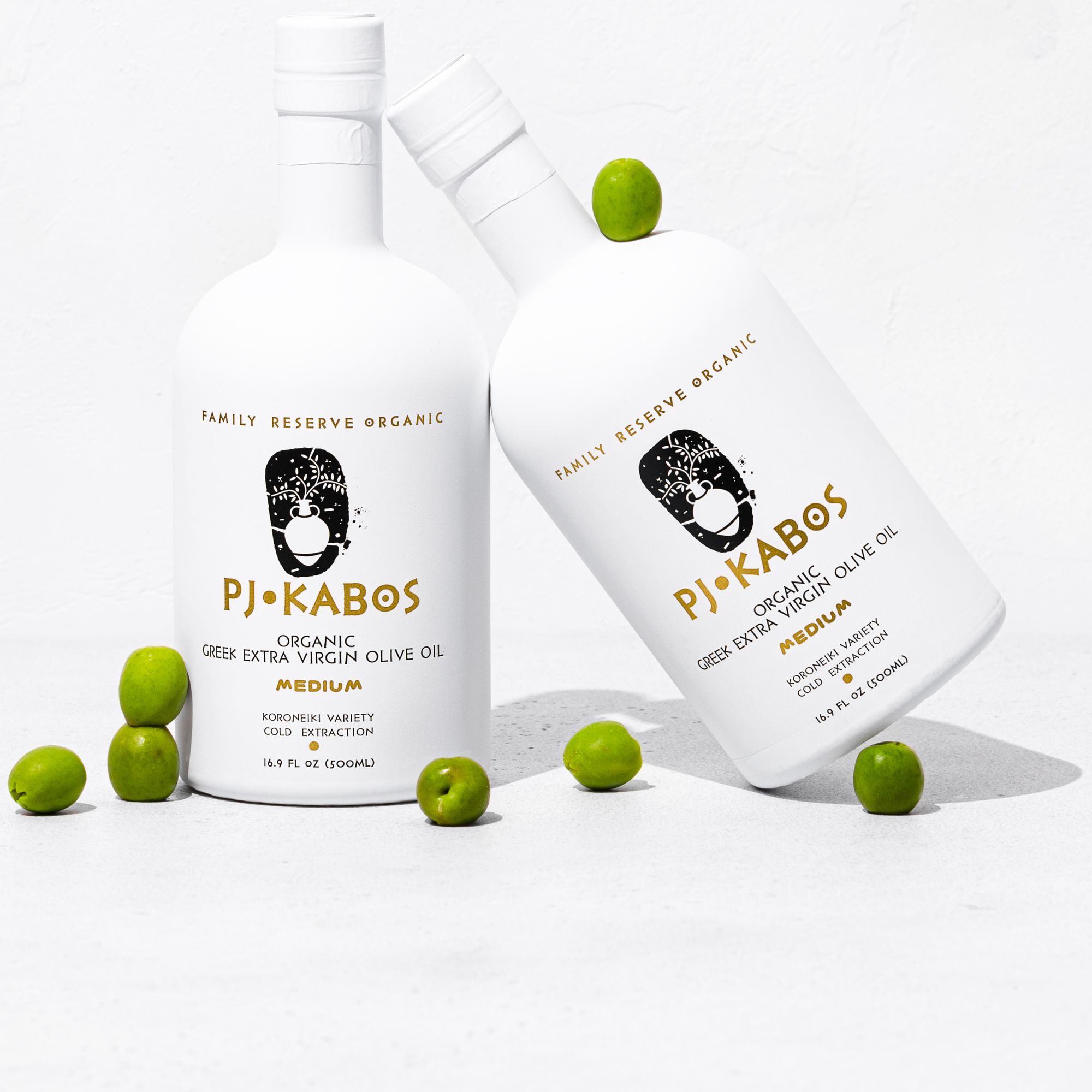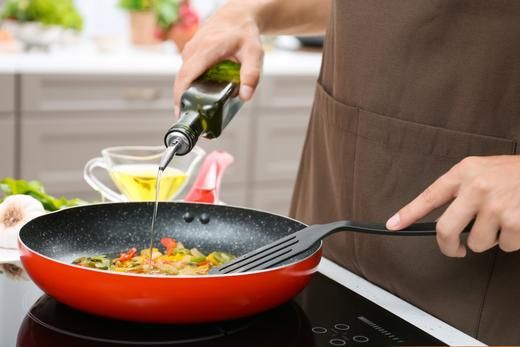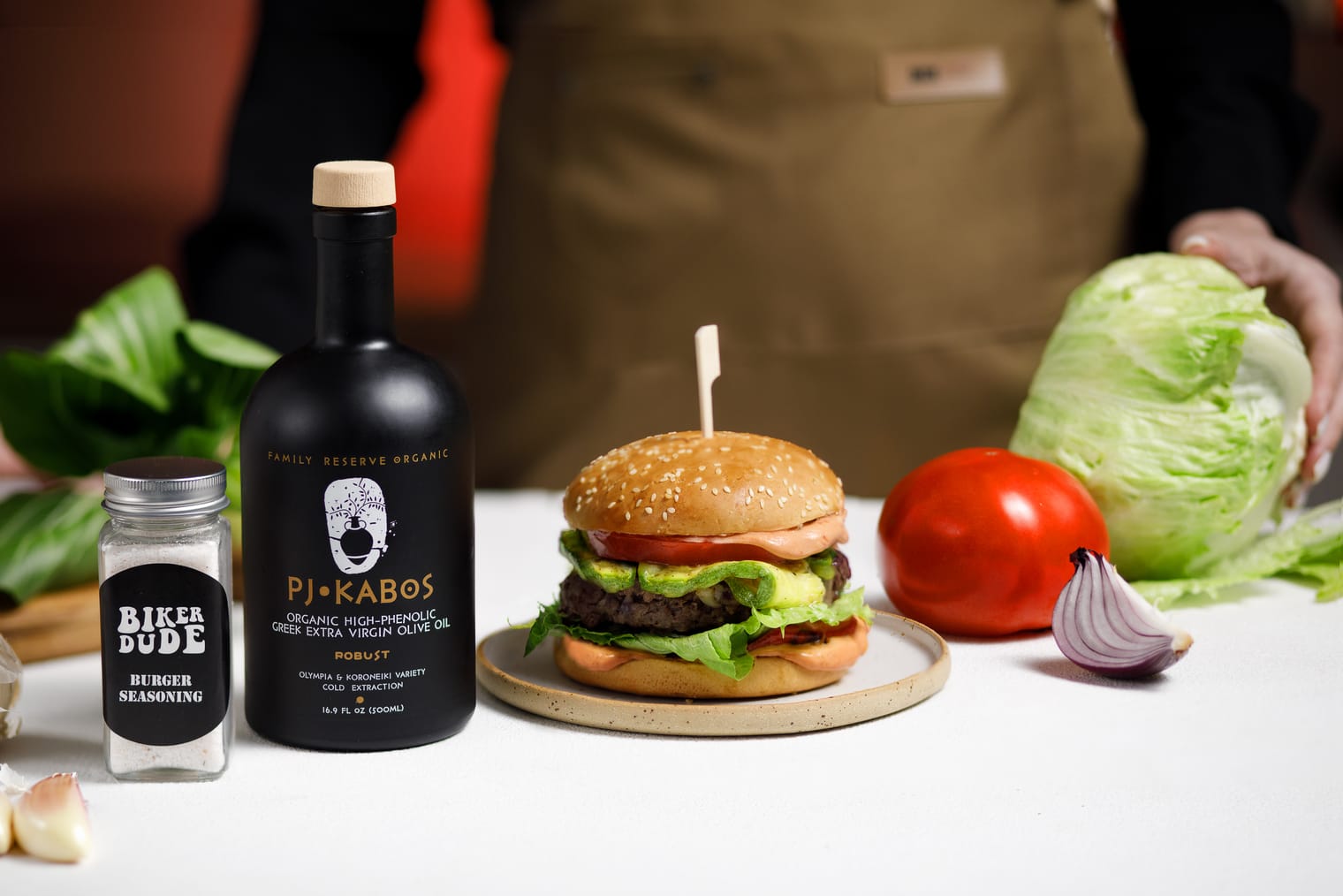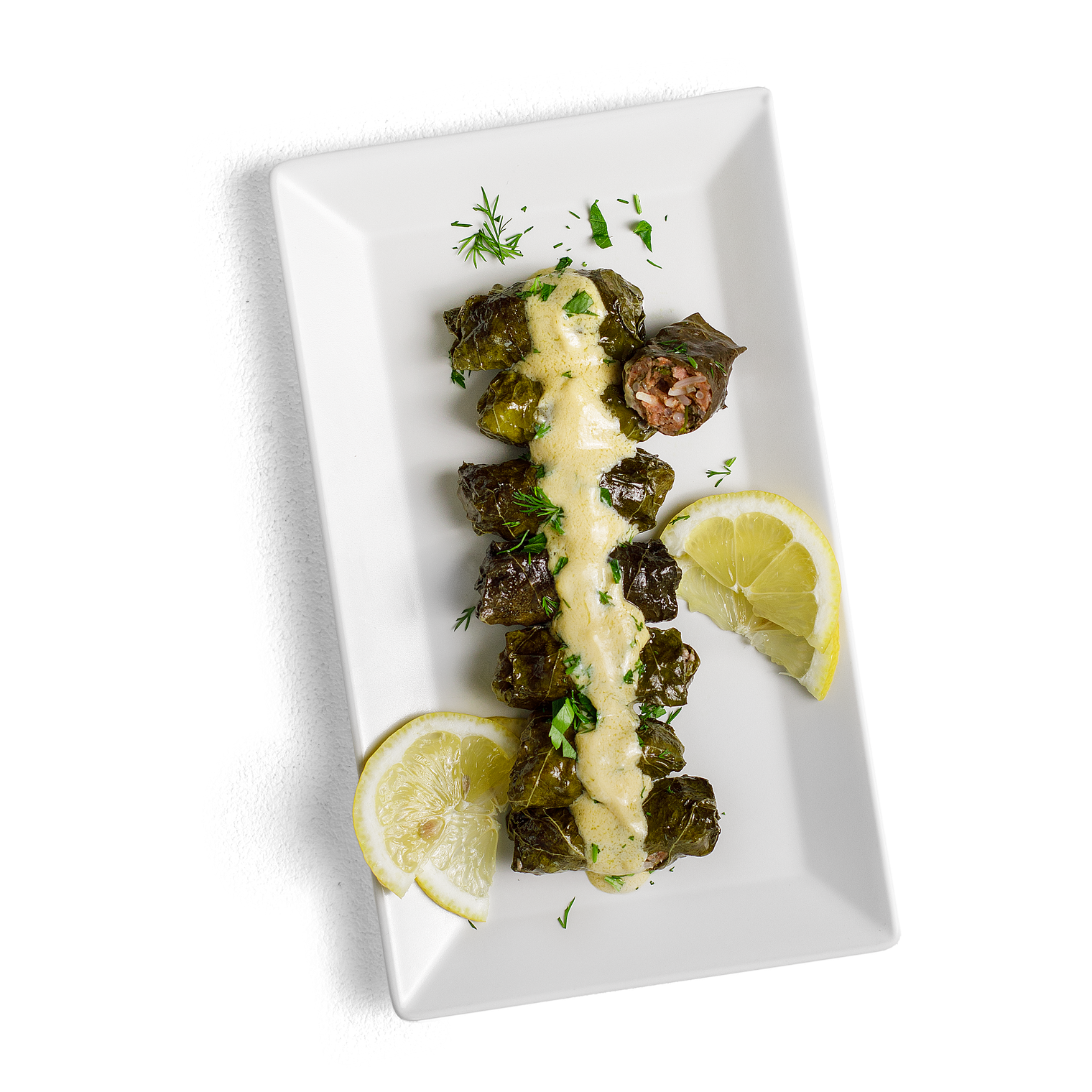We all know the scene: you’re standing in the olive oil aisle at the grocery store, reading some labels without much conviction, comparing prices between "everyday extra virgin olive oil" and "organic extra virgin olive oil," practicing your Italian, knowing you'll probably end up with that same Filippo Berio bottle you always grab.
With so many options, it’s easy to pluck any old glass bottle off the shelf and keep shopping. However, there is a difference between all those bottles and all those types of olive oil!
Olive oil is wonderfully diverse and versatile – that’s part of what makes it so special. But certain olive oils are better suited to certain applications. Just like wine, each bottle of olive oil brings its own unique story. Some are better for drizzling, and some are better for sauteing. Some are peppery and powerful, while others lend a more mild flavor with low acidity.
But where to start? Here’s everything you need to know about buying the best olive oil for cooking.
Why does your cooking oil matter?
All oils have a “smoke point.” This is the temperature at which an oil breaks down and starts to form potentially unhealthy compounds. This also alters the flavor of the cooking oil, releasing a chemical that gives a burnt flavor to your dish. When this happens, the oil will burn and you’ll start to see and smell smoke.
It’s not all bad news! While one sometimes hears rumblings that olive oil can’t be used for cooking, that is far from the truth. As a general rule, more refined oils have a higher smoke point than unrefined oils. As such, the oils with the highest smoke point are refined avocado oil, coconut oil, and – surprise! – refined olive oil. Olive oil has an even higher smoke point than butter.
The average smoke point of olive oil is 350° to 410° F, potentially reaching 470° F on refined varieties. That means it can certainly be used for sauteing – as long as you keep the heat at medium or medium-high, depending on your stove top. Olive oil can even be pan frying and deep frying.
Here’s a look at the various cooking techniques and which olive oil is best for the job.
The Best Olive Oil for Drizzling
If you’d like to add a little silky rich goodness and flavor to a dish, a drizzle of olive oil is just what the doctor ordered. (And your doctor will be happy, too – olive oil is packed with health benefits!) As drizzling highlights the flavor of the oil, you’ll want to choose a good bottle with an intriguing flavor profile. This is a job for the good stuff: extra virgin olive oil.
Extra virgin olive oil (EVOO), is considered the finest olive oil in all the land. It is cold-extracted and unrefined, meaning it maintains its incredible health benefits as well as the flavor. EVOOs can be fruity and slightly sweet, vegetal and zippy, buttery, spicy, peppery, or a combination. Drizzling is an ideal way to taste the unique flavor of an olive oil, as the olive oil remains unheated.
Recipe Ideas for Drizzling Olive Oil
Pour a peppery EVOO on top of a bowl of homemade gazpacho (or store-bought gazpacho to give it a more gourmet feel).
Drizzle some finishing oil over a homemade hummus.
Top your vanilla ice cream with a glug of oil (and add a pinch of flaky sea salt, if you really like your desserts savory!).
Decorate your roasted broccoli before topping with lemon and Parmesan.
Add some extra goodness to your homemade pizza (or just dip your crusts!).
Pour over boiled potatoes with sea salt and black pepper to taste.
The Best Olive Oil for Sauteing
Sauteing is a cooking method that cooks food quickly using a hot pan and a small amount of fat. As sauteing is typically done at 400 degrees or lower, olive oil can certainly do the job. But which olive oil is the right pick?
Some chefs like to use EVOO for sauteing for its distinctive taste, which adds a punch of flavor to a dish. Health professionals like it for its added boost of health benefits. Of course, if you have an expensive bottle of EVOO on hand, you might want to save it for finishing and use a cheaper olive oil for cooking.
If that’s the case, you can also saute with virgin olive oil or regular olive oil. Virgin olive oil is quite similar to EVOO, and has many of the same health benefits. However, when compared with EVOO, virgin olive oil can have some minor defects in flavor, making it less expensive than the finest EVOO. When it comes to sauteing, however, you probably won’t notice a difference.
Regular/pure olive oil, sometimes labeled as “olive oil,” has an even higher smoke point (~470° F). That means you can really turn up the heat. It also has a more neutral flavor, which makes it more versatile for cooking.
Recipe Ideas for Sauteing with Olive Oil
If you’re sauteing with nice EVOO, make sure your temperature is relatively low and the flavor of the dish mild. Saute some spinach with a little garlic and a squeeze of lemon.
When sauteing with virgin olive oil or regular olive oil, the world is your oyster. Turn the heat up a bit, and saute some mushrooms with shallots and a glug of red wine. Saute some simple chicken breasts with salt and pepper.
The Best Olive Oil for Pan Frying
Similar to sauteing, olive oil can also be used for pan frying. Pan frying is a technique that uses more oil, perhaps ⅓ of an inch in the pan. (This is different from deep frying, where your food will be entirely submerged in the oil.) EVOO is suitable for pan-frying, but as the oil typically gets hotter in this cooking method, you’ll may want to use a refined oil like regular olive oil or light olive oil, which have higher smoke points.
Light olive oil may sound like a diet alternative, but that’s not where this oil gets its name. Light olive oil (and extra light olive oil, which you sometimes see in supermarkets) is actually a combination of refined olive oil and a little bit of virgin olive oil, perhaps 5%-10%. These oils have fewer health benefits and have a very neutral flavor.
Recipe Ideas for Pan-Frying with Olive Oil
Bon Appetit recommends using EVOO to make a crispy fried egg. How? Add a healthy pour of EVOO to the pan and heat it up on medium. When the oil gets hot, crack the egg into the pan. You’ll want the edges to get lacy and brown before you pull it off. (Side note: while Bon Appetit recommends EVOO, we say you can use any oil for this technique!)
Impress your date with a pan-seared pork chop.
Use regular or light olive oil to pan-fry breaded chicken breasts, or make some crispy fritters. Pan-fry latkes (potato fritters), zucchini fritters, or chickpea fritters.
The Best Olive Oil for Deep Frying
Some chefs wouldn’t consider deep frying in olive oil. It’s not that you can’t deep fry with olive oil – it’s that it’s expensive. As deep frying uses a lot of oil, many chefs opt for vegetable or canola oil, which are cheaper oils with a high smoke point.
That said, if you have a lot of olive oil on your hands, it is certainly possible to deep fry with olive oil. In fact, Mediterranean cooks have been doing it for centuries. The trick? Just make sure the heat doesn’t get too high. If you’re using a deep fryer, keep the temperature at around 340° to 380° F.
Recipes for Deep Frying in Olive Oil>
Make some decadent homemade french fries.
Deep fry delicate zucchini blossoms stuffed with ricotta and battered.
Try some sweets, like churros or doughnuts.
The Best Olive Oil for Baking
It’s common to bake with vegetable or canola oil for their neutral flavor, but olive oil can bring some lovely character to a baked good.
If you’d like your final product to have a distinct olive oil flavor, opt for a flavorful EVOO. If you’re baking with olive oil for the health benefits (or just because you have it on hand), you can replace the vegetable oil or canola oil in a recipe with a mild EVOO, or a regular or light olive oil.
Recipes for Baking with Olive Oil
Olive oil is a key ingredient in focaccia, the rich, salty, addictive bread. Samin Nosrat’s Ligurian focaccia recipe is a great place to start.
Try our recipe for a delicate and delicious Gluten Free Lemon Olive Oil Cake, best made with extra virgin olive oil.
In Closing
So, whether your olive oil comes from Italy, Spain, Greece, Tuscany, Portugal, Sicily, Tunisia, or California, there are tons of different varieties to pick from depending on if it's going to meet some high heat, serve as a salad dressing alongside some vinaigrette, be part of a rich marinade, or get drizzled over some veggies before going in the oven. Any which way you choose, you'll be lucky enough to not only enjoy all the different flavors, but also the antioxidants and fatty acids that most olive oils can provide!
Sources:
https://www.saltfatacidheat.com
Product placement
PJ KABOS 'Family Reserve Organic - Medium'
High Phenolic and 2022 Gold-Award Winner.
Declared as 'One of the World's Best Olive Oils'.
Click here to shop.





